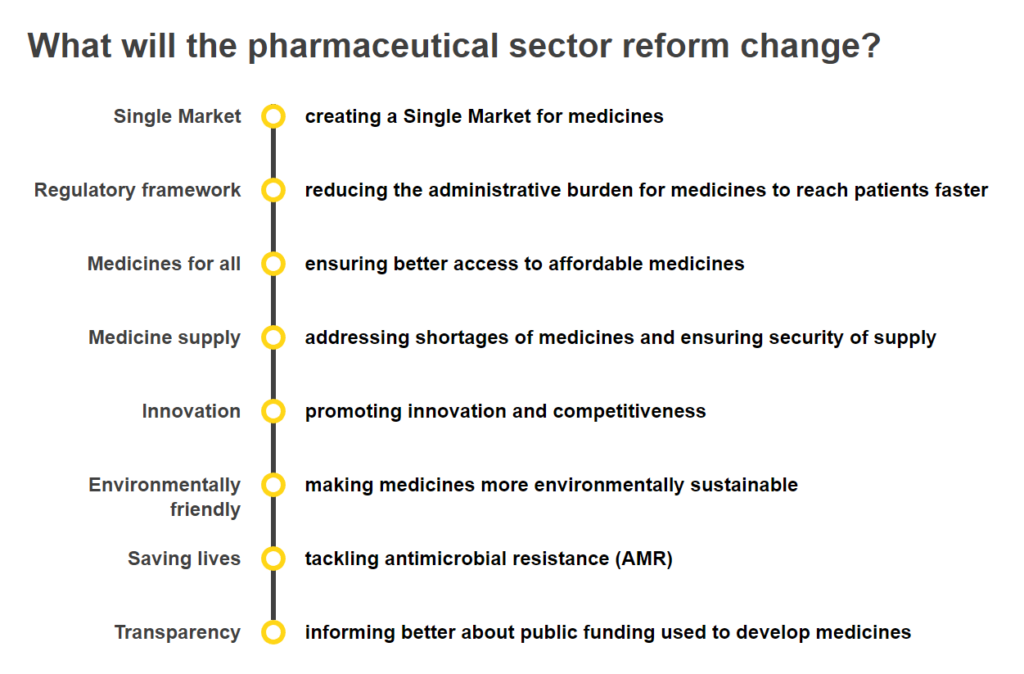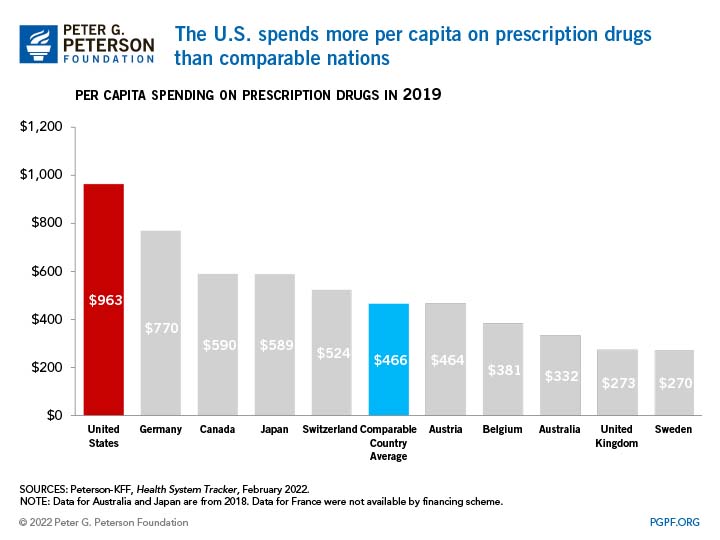The COVID-19 pandemic re-shaped European Union leaders to reimagine healthcare, public health, and health citizenship in the EU.
Welcome to #HealthUnion, the hashtag that the European Commission has adopted with the vision of assuring access to medicines for all people living in the 27-nation EU area — regardless of socioeconomic status.

On 26th April 2023, the EC unveiled the most significant reforms for the region’s pharmaceutical industry in twenty years. It’s really a package or “toolkit” in the words of EC Health and Food Safety Commissioner Stella Kyriakides for addressing several strategic health pillars including but not limited to medicines.
The objectives were succinctly summarized by “3 A’s” and “3 C’s:”
- Access
- Affordability,
- Availability; and,
- Competitiveness,
- Compliance, and
- Combating antimicrobial resistance (AMR).
For context, note that the pharma sector rules in Europe have not been updated for the past 20 years, VP Margaritis Schinas introduced the meeting. The goal of the updated legislation is to be a holistic, modern approach that incorporates lessons drawn from the pandemic and the world, he said.

With an announcement of a new policy for an industry playing such a huge role in the EU economy, stakeholders lined up pro, con, and “meh” in the wake of the remarks. Europe’s medicines industry sits between “a dominant US and a rising China,” as POLITICO described the market in this moment.
Predictably, the European pharmaceutical company stock share prices fell on the day.
Nonetheless, VP Schinas enthused, “Never before in the history of the EU are we able to do so much in the area of public health,” he explained. “Not only in terms of the management of the pandemic, a once in century event, but also in building…..an EU Health Union.”
The EU’s vaccines strategy was the biggest vax program in the history of mankind, Schinas asserted, which allowed all Europeans to get safe vaccines regardless of their place of residence or socioeconomic status.

This aspect of a Health Union, where all health citizens of the EU should have equitable access to drugs and health services, is a key objective of the updated legislation.
The bar chart illustrates that even in the EU, your postal code makes a difference in terms of your ability to access medicines. The “west” oriented EU nations tend to have had better access to prescription drugs than those less developed states in the EU-east. Thus people living in Germany, Austria, Denmark, Italy and Netherlands have enjoyed greater access to Rx drugs than health citizens living in Croatia, Lithuania, and Latvia, shown at the far right of the diagram.
“It is not a secret that big member states up to now had better chances to get certain drugs faster,” Schinas admitted. This should not create a 2-tier approach of first- and second-class citizens in the long run, he said.
There are many more details to know about the EU pharma legislation, so do check out this link which will give you on-ramps to various provisions of the landmark announcement.
And here’s a video from the EC summarizing the objectives of the pharma reforms…
Health Populi’s Hot Points: Putting our U.S. lens on in light of the EU Pharma reforms update, note that U.S. spends more on prescription drugs per capita health citizen than any other country on Earth, shown in the bar chart comparing Americans’ medicines spending versus that in other wealthy nations.

Prescription drug cost reforms aren’t only on European policymakers’ minds: they’ve been part of U.S. Presidential and Congressional campaign promises for more than two decades. I’ll remind all of us that a newly-elected President Trump talked about pharma companies quite critically in TIME magazine’s coverage which I discussed here in Health Populi in December 2016. Even then, President-Elect Trump told TIME‘s reporter, “I’m going to bring down drug prices. I don’t like what’s happened with drug prices.”
Eight+ years later, this week, bipartisan legislation addressing pharmacy benefit managers (PBMs) and expanding generic drugs availability emerged from the Senate HELP Committee, co-sponsored by Bernie Sanders (I-Vt) and Bill Cassidy, MD (R-La). Now that makes for fascinating bedfellows by any definition in today’s U.S. political climate. The bill will be marked up beginning in early May.![]()
Bipartisanship is unique among U.S. health citizens, too, not just in the legislative duet of Sanders-and-Cassidy.
Affording prescription drug costs has been a worry on mainstream household spending concerns, noted in this Kaiser Family Foundation health tracking poll conducted just over a year ago.
For several years, nearly as many Republicans as Democrats have been looking to government to pass legislation allowing Medicare to negotiate drug prices with pharmaceutical companies.
That’s very macro looking to the Federal government (CMS, enabled through Congress and the President) to enable this sort of negotiation.
But a Health Union the kind of which has been envisioned and codified in the EU’s Pharma Reform plans is not currently likely in the U.S. — as much and as long as I have been evangelizing the ideal of Health Citizenship for all U.S. health citizen-consumers.
The health plan assuring U.S. families with lower incomes, Medicaid, has been operated and co-founded at the State level. That’s a 50-State solution with varying levels of access and support.

When it comes to medicines, that 50-State reality is playing out in real-time now in the post-Dobbs environment, with the current confusing and legally challenging barriers for millions of women seeking health care — highly dependent on where they live. Research from a Pew Research Center poll released this week bears this out.
Health citizenship in America, and a more perfect Health Union, will continue to elude us for some time. No doubt the 2024 elections at both the U.S. national and state levels will draw many voters to vote with health care access top-of-mind as well as on the kitchen table.





 I am so grateful to Tom Lawry for asking me to pen the foreword for his book, Health Care Nation,
I am so grateful to Tom Lawry for asking me to pen the foreword for his book, Health Care Nation,  I love sharing perspectives on what's shaping the future of health care, and appreciate the opportunity to be collaborating once again with Duke Corporate Education and a global client on 6th May. We'll be addressing some key pillars to consider in scenario planning such as growing consumerism in health care, technology (from AI to telehealth), climate change, and trust -- the key enabler for health engagement or dis-engagement and mis-information. I'm grateful to be affiliated with the corporate education provider
I love sharing perspectives on what's shaping the future of health care, and appreciate the opportunity to be collaborating once again with Duke Corporate Education and a global client on 6th May. We'll be addressing some key pillars to consider in scenario planning such as growing consumerism in health care, technology (from AI to telehealth), climate change, and trust -- the key enabler for health engagement or dis-engagement and mis-information. I'm grateful to be affiliated with the corporate education provider  Thank you FeedSpot for
Thank you FeedSpot for